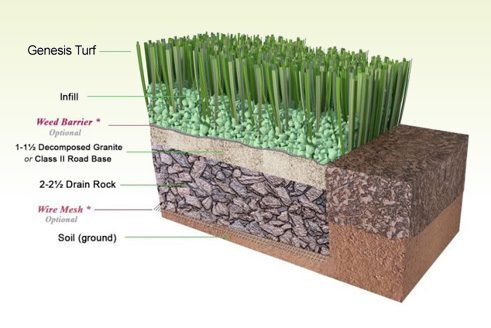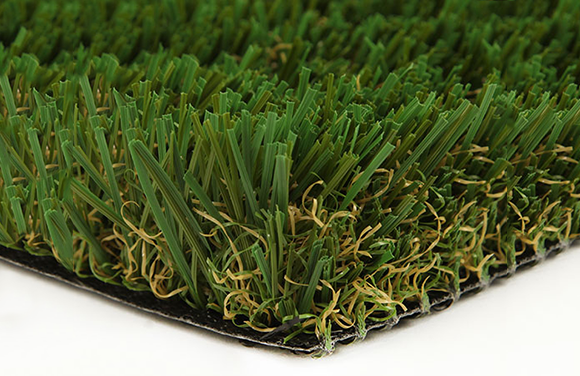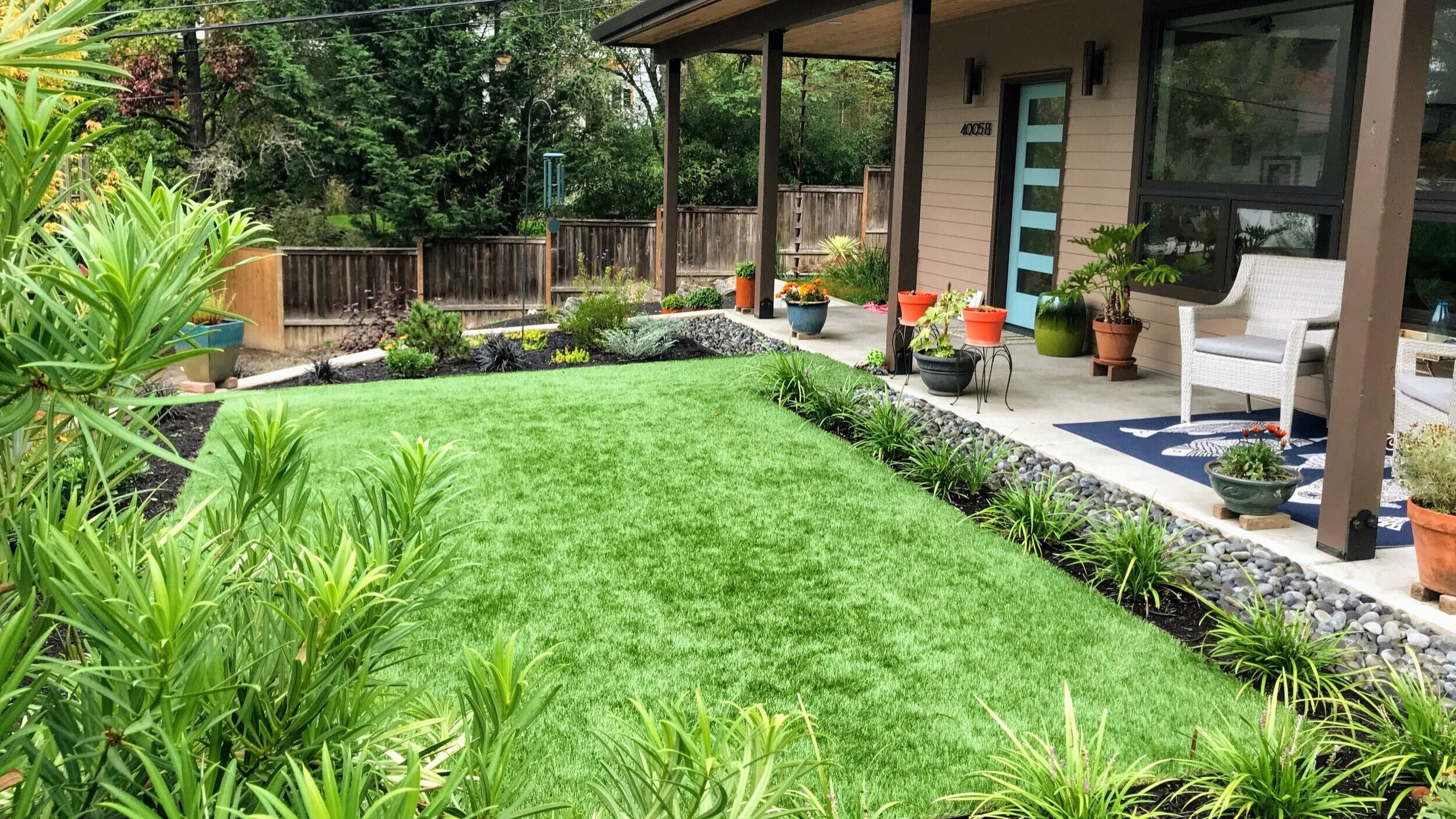Weather-Resistant Arizona Artificial Turf for Residential and Business Applications
Weather-Resistant Arizona Artificial Turf for Residential and Business Applications
Blog Article
Look Into the Environmental Conveniences of Opting for Synthetic Grass Solutions
The adoption of artificial grass solutions provides a compelling chance to resolve pushing ecological challenges. By substantially decreasing water use and decreasing the application of hazardous chemicals, these alternatives not only advertise sustainable landscaping but also secure local environments.
Water Conservation Advantages
One of the most significant advantages of artificial turf is its capacity to preserve water. In contrast, synthetic lawn does not require watering, dramatically decreasing the overall need for water sources.
By removing the demand for regular watering, synthetic grass contributes to sustainable landscape methods and assists alleviate the environmental impact of excessive water intake. The conservation of water expands to the reduction of runoff, which can lead to soil erosion and river air pollution.
Furthermore, the installation of artificial grass permits districts and homeowners to designate water resources more efficiently, concentrating on vital usages such as drinking water and agriculture. The change in the direction of synthetic grass not just promotes accountable water usage however additionally aligns with broader ecological objectives aimed at protecting natural deposits.
As neighborhoods progressively focus on sustainability, the water conservation benefits of synthetic grass offer a compelling situation for its fostering in residential and commercial landscape design jobs.
Decreased Chemical Use
The shift to synthetic grass significantly lowers the reliance on chemical treatments typically used in natural grass maintenance. Traditional lawn administration commonly entails the application of fertilizers, pesticides, and herbicides to promote development and control bugs. These chemicals can position threats to human wellness, local wild animals, and the environment, adding to dirt and water contamination.
In comparison, synthetic grass eliminates the need for these damaging compounds. Once installed, it calls for minimal upkeep, primarily including regular cleaning and irregular infill replenishment. This reduction in chemical use not just profits the instant atmosphere but additionally adds to more comprehensive ecological security. By minimizing the release of artificial compounds into the ecological community, artificial turf promotes healthier soil and water supply.
In addition, the lack of chemical overflow associated with man-made grass setups aids secure regional waterways from air pollution, supporting marine life and keeping biodiversity. Phoenix turf companies. As areas progressively prioritize sustainable practices, deciding for artificial grass provides a practical remedy that aligns with ecological conservation goals. Through this shift, homeowner can take pleasure in rich eco-friendly spaces without endangering environmental health and wellness, paving the way for an extra sustainable future
Reduced Carbon Impact

Furthermore, the installment of synthetic turf can result in considerable water conservation. All-natural lawns call for considerable amounts of water for watering, which not only contributes to the carbon impact related to Full Article water extraction and treatment yet additionally strains regional water sources. In comparison, artificial turf needs very little upkeep, calling for no watering, thereby substantially lowering water use and its linked power costs.
Furthermore, the longevity of artificial turf adds to its decreased carbon effect. With a life expectancy of as much as 15 years or even more, the need for frequent replacements is diminished, resulting in less waste and lower energy consumption in manufacturing and throwing away standard yard choices. On the whole, synthetic grass provides a lasting alternative for environmentally conscious landscape design.
Environment Conservation
Environment preservation is a critical factor to consider in the argument over landscaping selections, particularly when contrasting synthetic grass to all-natural turf. Natural turf lawns frequently need comprehensive maintenance, consisting of the use of plant foods, herbicides, and pesticides, which can adversely affect local communities. These chemicals can seep right into the dirt and rivers, harming indigenous flora and fauna and disrupting regional habitats.
In comparison, fabricated lawn provides a chance to lower the environmental footprint of landscape design. By choosing for artificial turf, home owners can read what he said minimize the interruption of all-natural environments associated with standard lawn care methods. Artificial turf removes the need for hazardous chemicals, consequently securing close-by wildlife and preserving the integrity of surrounding environments. Furthermore, the installation of artificial lawn can cause the conversion of previous yard areas right into even more biodiverse landscapes, such as pollinator yards or native plant locations, which can support neighborhood wild animals.
Eventually, the transition to synthetic grass not only preserves water and lowers upkeep initiatives however additionally fosters a much i thought about this more unified connection between human tasks and the native environment, advertising habitat preservation while doing so.
Long-Term Sustainability
Long-term sustainability is a crucial consider evaluating the advantages of synthetic grass over traditional grass yards. One of one of the most substantial benefits of artificial grass is its toughness; it can last as much as 15-20 years with marginal maintenance, whereas all-natural lawn requires regular reseeding and replacement. This durability reduces the demand for constant sources, such as water, fertilizers, and chemicals, which are important for keeping a healthy yard lawn.
Furthermore, fabricated grass adds to a reduction in carbon emissions related to yard treatment tools. Conventional grass typically call for gas-powered mowers, leaners, and blowers, every one of which add to air pollution. Arizona turf. In contrast, synthetic grass eliminates the requirement for such tools, advertising a cleaner environment
Furthermore, the manufacturing of synthetic grass significantly makes use of recycled materials, improving its sustainability account. As suppliers take on green practices, the environmental footprint of man-made lawn continues to reduce.

Conclusion
The adoption of man-made lawn solutions offers considerable environmental benefits, including considerable water preservation, minimized dependence on hazardous chemicals, and a lower carbon footprint. Synthetic turf help in maintaining all-natural habitats by minimizing land disruption and promoting long-lasting sustainability with the use of durable products. Collectively, these factors emphasize the possibility of synthetic grass to add favorably to environmental health and supply a sensible alternative to typical landscaping methods in a significantly resource-conscious world.
In comparison, synthetic lawn does not require watering, dramatically reducing the general need for water resources. By reducing the release of artificial compounds into the ecological community, man-made turf advertises healthier soil and water systems.
In addition, the installation of synthetic grass can result in substantial water conservation. In contrast, fabricated turf needs marginal upkeep, calling for no watering, thus dramatically decreasing water usage and its linked power prices.

Report this page